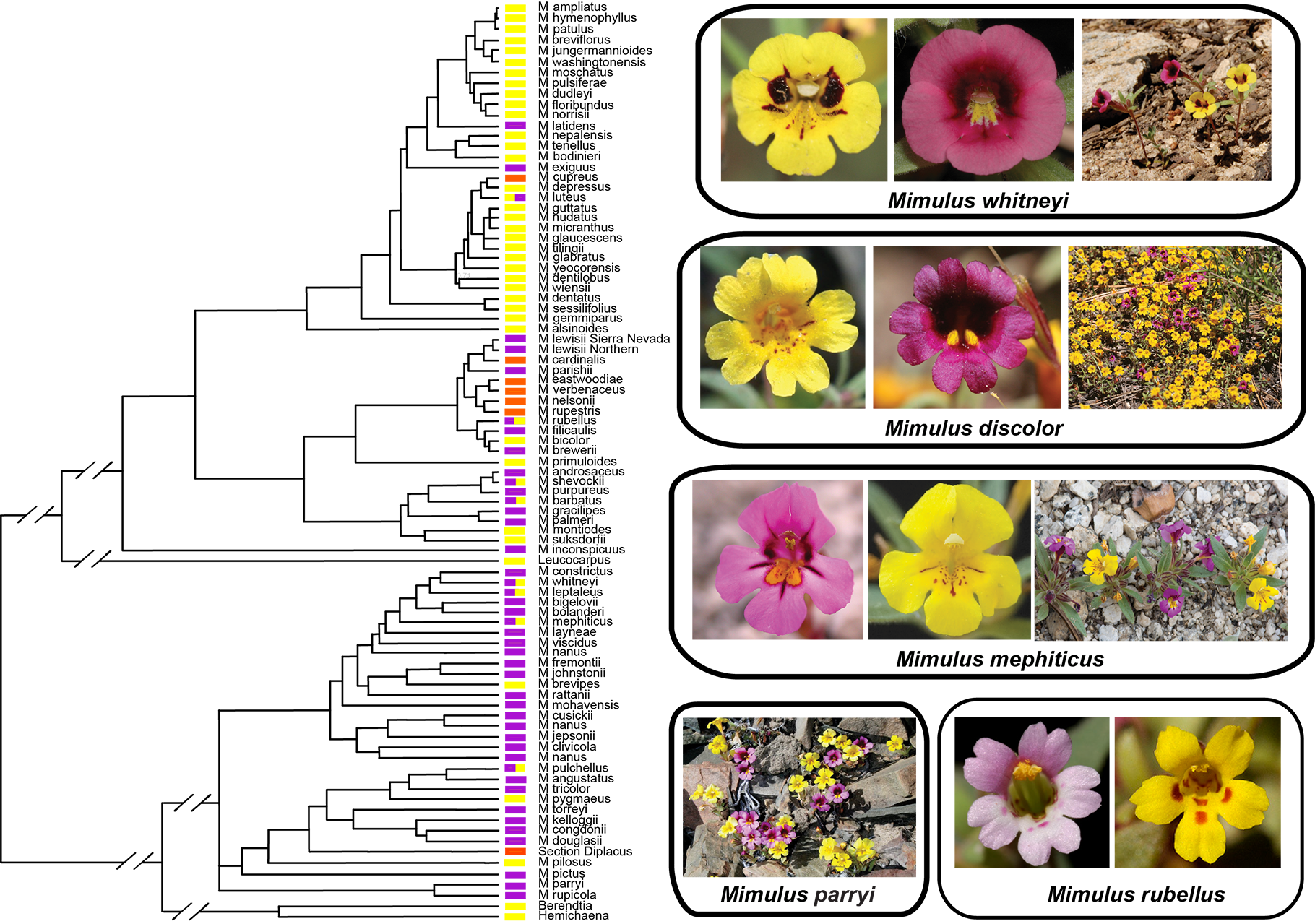 Figure 1. On the left is the Mimulus phylogeny from Grossenbacher and Whittall (2011). There are ~20 independent color switches between pink/purple and yellow flowers in the genus. The pink and yellow boxes before the species names indicate anthocyanin-based pink/purple flowers and carotenoid-based yellow flowers, respectively; the oragne color indicates the presence of both anthocyanins and carotenoids. On the right are several species that have both color forms growing in the same natural population without intermediate phenotypes.
Figure 1. On the left is the Mimulus phylogeny from Grossenbacher and Whittall (2011). There are ~20 independent color switches between pink/purple and yellow flowers in the genus. The pink and yellow boxes before the species names indicate anthocyanin-based pink/purple flowers and carotenoid-based yellow flowers, respectively; the oragne color indicates the presence of both anthocyanins and carotenoids. On the right are several species that have both color forms growing in the same natural population without intermediate phenotypes.A common metaphor for describing phenotypic evolution is the “adaptive landscape”. Most extant organisms are thought to sit on the “peaks” of such adaptive landscapes. However, how does a phenotype shift from one peak to another is not clear. Common hypotheses include (1) There are “ridges” connecting the adaptive peaks, such that phenotypes along the ridge are more or less equally fit under a specific environment; (2) There are no ridges connecting the peaks but when effective population size is small enough, phenotypes may be able to traverse the less-adaptive region (i.e. adaptive valley) by genetic drift. Based on the frequent flower color switches in Mimulus, we propose a third hypothesis: instantaneous adaptive peak shift. That is, a single genetic switch controls the shift from one adaptive phenotype to another, without intermediate, less-adaptive phenotypes.
Most Mimulus species are bee-pollinated and have either purple/pink flowers (anthocyanin-based) or yellow flowers (carotenoid-based). A mixture of anthocyanins and carotenoids will produce an orange or red flower (as in the hummingbird-pollinated M. cardinalis). While both the yellow and purple/pink morphs can be considered as “adaptive peaks” because bees can perceive both colors without difficulties, the intermediate phenotype (orange or red) would be in an “adaptive valley” because most bees have difficulties in perceiving red-orange color. Then how comes the shift between yellow and purple/pink seems to be so easy (there are at least 20 independent switches in the genus; Figure 1)? Several species have both color morphs growing in the same well-mixed natural population, without any intermediate forms (Figure 1). We think there might be master regulators that can simultaneously switch one pigment pathway off and turn the other pigment pathway on — an instantaneous adaptive peak shift without the need to traverse a valley or ridge. Indeed, the recently discovered carotenoid regulator, RCP1, seems to display the properties of such a master regulator. When over-expressed in M. lewisii, RCP1 can simultaneously up-regulate carotenoid biosynthetic genes and down-regulate anthocyanin biosynthetic genes.
We aim to test the “instantaneous adaptive peak shift” hypothesis by genetic analysis of the species that have both color morphs. The other major goal of this project is to understand how and why flower color switch between yellow and pink/purple so frequently in the genus Mimulus. Do these independent transitions involve mutations in the same gene over and over again? or each transition follows a different evolutionary trajectory? What is the evolutionary driving force under these frequent transitions?
This project is being further developed by former graduate student in the lab, Dr. Lauren Stanley. Stay tuned.